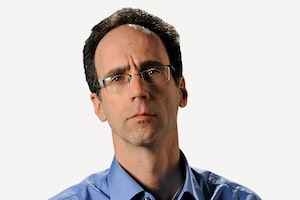Toronto police officer James Forcillo leaving the University Courts on Jan. 25, 2016.Fred Lum/The Globe and Mail
With a rare finding of attempted murder – even though the victim died – the prosecution strategy in the trial of Toronto police Constable James Forcillo was vindicated, legal observers say. Constable Forcillo shot 18-year-old Sammy Yatim dead on a streetcar in July, 2013. Mr. Yatim, who had taken ecstacy that night, was holding a knife when he was shot at nine times.
"I think the Crown realized after the preliminary inquiry there was a significant likelihood of not being able to convince the jury that Forcillo committed murder, and the Crown was looking to offer the jury a 'halfway house' so they could get a conviction of some sort," Toronto lawyer Russell Silverstein, who was not involved in the case, said in an interview.
"Given the history of prosecutions of police in Toronto, if the jury had been stuck with the stark choice between a conviction for murder and an acquittal, I think you'd have seen an acquittal."
The trial demonstrated the power of video evidence, particularly the explicit images from the transit service's cameras within the streetcar, said Ian Scott, the former director of Ontario's Special Investigations Unit who laid the murder charge against Constable Forcillo. The SIU is a civilian body that looks into police incidents in which someone is seriously harmed or killed.
"When a jury sees the video, they're prepared to make their own judgment. Before video, it was the eyewitnesses at the scene who controlled the narrative. And over and over again, the eyewitness at the scene in these kind of cases would have been other police officers. And it's just so easy to manipulate the narrative through examination and cross-examination. Whereas it's very difficult to cross-examine a video. So I think we're in a new era."
Underlying the prosecution's strategy was forensic evidence on the timing of the shots, which allowed Crown attorney Milan Rupic to treat the first three shots Constable Forcillo fired at Mr. Yatim as an act distinct from the barrage of six shots he fired next, Mr. Scott said. And Ontario Superior Court Justice Edward Then accepted that approach. For one thing, Mr. Silverstein pointed out, Mr. Yatim was standing holding a knife when Constable Forcillo started shooting, and lying on the ground when the second volley came. For another, the first three shots caused Mr. Yatim's death, not the second group of shots, as Justice Then noted in his charge to the jury. "Sammy Yatim was to all intents and purposes dead," Mr. Silverstein said.
"To a lawyer, it's all perfectly logical," said Alan Gold, a Toronto criminal lawyer who has defended police in court. Jurors in Canada are not permitted to explain publicly what went on in the jury room, unlike in the United States. But in acquitting Constable Forcillo of murder for the first three shots, they would have found that he was justified, or acted in self-defence, Mr. Gold said.
Julian Falconer, a lawyer representing Mr. Yatim's mother and sister in a civil case against Constable Forcillo and the Toronto Police Service, said it was "obvious the jury was very concerned about the extent of force used when Sammy Yatim was already down and Constable Forcillo continued to shoot. The reality, in the context of any jury trial, is the jury tries to identify what it believes is a just verdict. They get all the instructions on the law and the facts, but at the end of the day, this was a jury that wasn't prepared to acquit Constable Forcillo for what he did. And they essentially adopted a 'halfway house.'"
Mr. Gold said he wondered about the jury's thought process: "If the jury felt the first three shots were justified, why would they believe he had an intention to kill on the next six shots?" Justice Then had given the jury the option of convicting Constable Forcillo on a lesser charge of aggravated assault, he noted.
Mr. Forcillo's lawyers intend to argue the trial was an "abuse of process," saying he followed his training. Mr. Scott said that, as a prosecutor, he dealt with cases in which defence lawyers tried to put a stop after the fact (but before an appeal) to guilty verdicts. "The defence can argue it, but the chances of success are remote in the extreme. I can't remember one ever being successful. It's just not the way our trials work. If you want to bring a 'stay' application, typically you brought it either as a pretrial motion or you brought it before there was a jury verdict. They're just not brought after jury verdicts."
During the trial, the defence unsuccessfully brought a mistrial motion after the judge rejected its bid to call an expert witness to testify that it was more likely than not that Mr. Yatim wanted to commit "suicide by cop."
 Sean Fine
Sean Fine